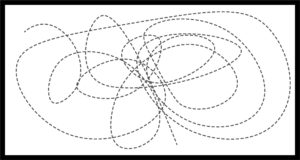 The Pathfinder manuscript is now available here on F1000 Research.
The Pathfinder manuscript is now available here on F1000 Research.
Anyone who has run behavioral experiments knows that after running hundreds (or thousands…millions?*) of trials you begin to see patterns that make you wonder if something else is going on that your analyses are not capturing. For people who study learning, memory and spatial navigation you may have put your mouse in a maze and seen it take turns, detours or routes that make you wonder if it is not quite as smart as you thought (WHY DO YOU KEEP MISSING THE PLATFORM YOU *$#*#%()!). Or maybe it is actually smarter than you thought (DAMN IS SHE SWIMMING TO OTHER PARTS OF THE MAZE BECAUSE OF THAT ONE TIME I FORGOT TO PUT THE PLATFORM IN THE POOL AFTER THE PROBE TRIAL ARGH IM SUCH A *#&%&%#(*(!). Or maybe you are at one with your mouse and ready to take him or her (both?) to the next level of spatial navigational testing?
If you answered yes to any of the above questions then you might be interested in our new Pathfinder software for automatically classifying different patterns of navigation, led by MSc student Matthew Cooke. Pathfinder is inspired by studies of water maze search behavior, which have found that rodents progress from random to procedural to highly spatially-specific search patterns as they learn a spatial goal location in new environment. These types of navigational strategies have distinct advantages, likely depend on different neural circuits, and they are affected in different disease models. But many people don’t analyze navigation strategies because there is no easy way to do so. That’s why we made Pathfinder, an open source, Python-based application. It currently opens files from Ethovision, Watermaze, Anymaze and the free, open source application ezTrack. While it’s optimized for analyzing rodent navigation in the water maze, it could also be used to analyze all sorts of spatial behaviors in different species and in different mazes, as long timestamped x-y coordinates are available. So, please test it out and let us know how it is working for you, and how we could make it better!
You can get it on Github and here is the abstract:
Spatial navigation is a universal behavior that varies depending on goals, experience and available sensory stimuli. Spatial navigational tasks are routinely used to study learning, memory and goal-directed behavior, in both animals and humans. One popular paradigm for testing spatial memory is the Morris water maze, where subjects learn the location of a hidden platform that offers escape from a pool of water. Researchers typically express learning as a function of the latency to escape, though this reveals little about the underlying navigational strategies. Recently, a number of studies have begun to classify water maze search strategies in order to clarify the precise spatial and mnemonic functions of different brain regions, and to identify which aspects of spatial memory are disrupted in disease models. However, despite their usefulness, strategy analyses have not been widely adopted due to the lack of software to automate analyses. To address this need we developed Pathfinder, an open source application for analyzing spatial navigation behaviors. In a representative dataset, we show that Pathfinder effectively characterizes the development of highly-specific spatial search strategies as male and female mice learn a standard spatial water maze. Pathfinder can read data files from commercially- and freely-available software packages, is optimized for classifying search strategies in water maze paradigms, but can also be used to analyze 2D navigation by other species, and in other tasks, as long as timestamped xy coordinates are available. Pathfinder is simple to use, can automatically determine pool and platform geometry, generates heat maps, analyzes navigation with respect to multiple goal locations, and can be updated to accommodate future developments in spatial behavioral analyses. Given these features, Pathfinder may be a useful tool for studying how navigational strategies are regulated by the environment, depend on specific neural circuits, and are altered by pathology.
*poor souls